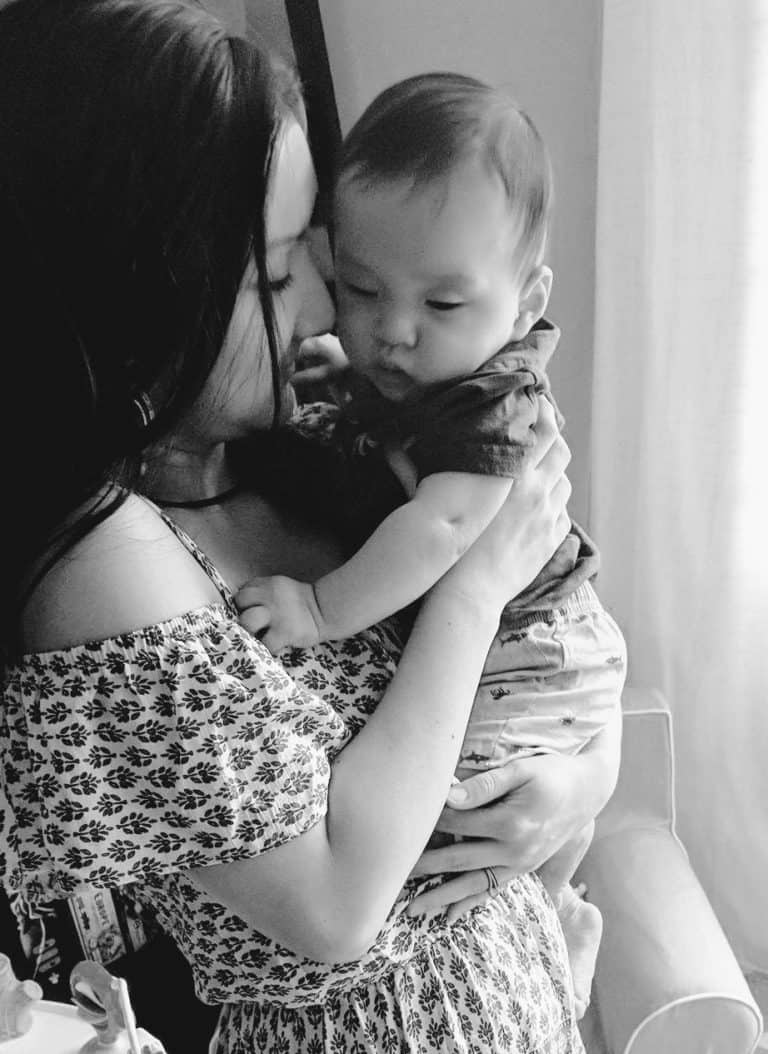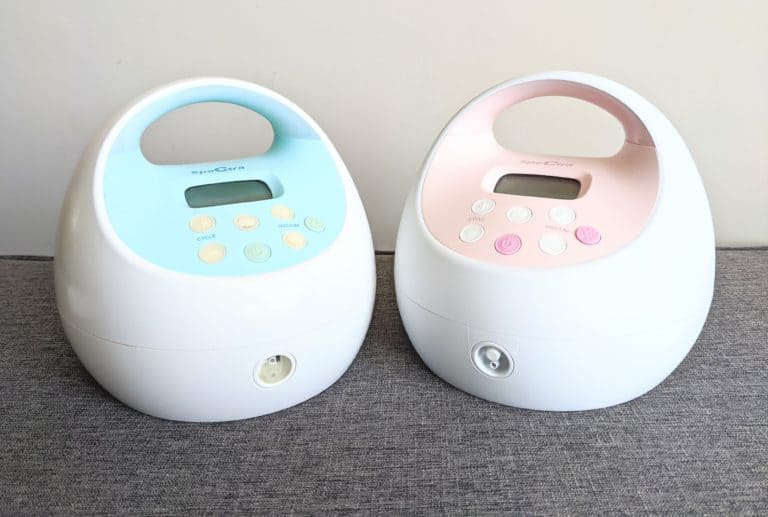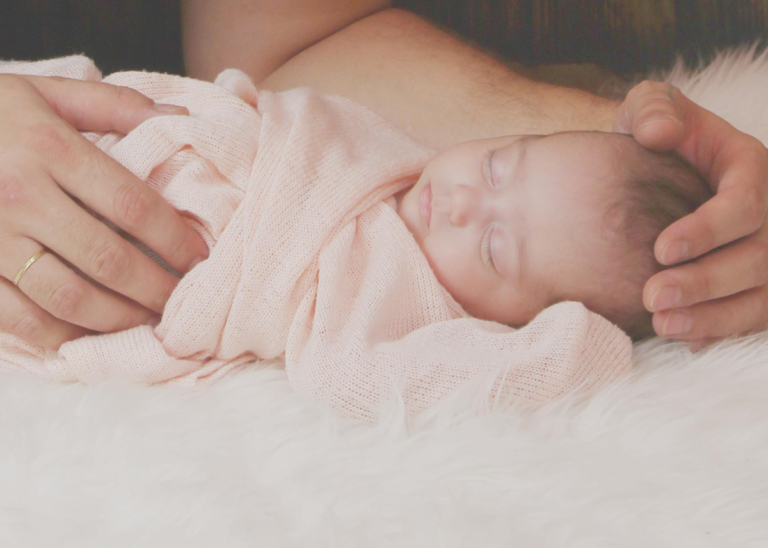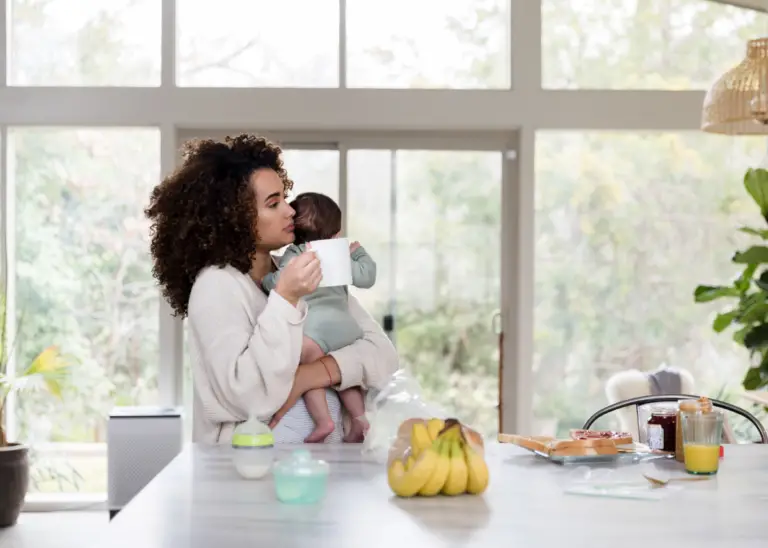7 Tips to Get Your Toddler to Use Utensils
Using a utensil to feed themselves is an important developmental milestone for a toddler! Being able to do this independently demonstrates that they have developed the fine motor control and hand-eye coordination needed to handle a utensil. This means they’re growing up! ???? Here are the top tips to help you help your toddler use utensils! Now excuse me while I go cry in a corner over how big Remy has gotten.
1.Consider baby led weaning
Baby led weaning (BLW) is the process of starting solids in your baby, not with the traditional pureed foods, but with the same foods that you are eating, just cut into the appropriate size! Since babies are feeding themselves from the very start, they have already developed the skills of picking up a piece of food and bringing in to their mouths. Now we just have to add utensils.
Read my blog post about baby led weaning to find out more info and if your baby is meeting all signs of readiness!
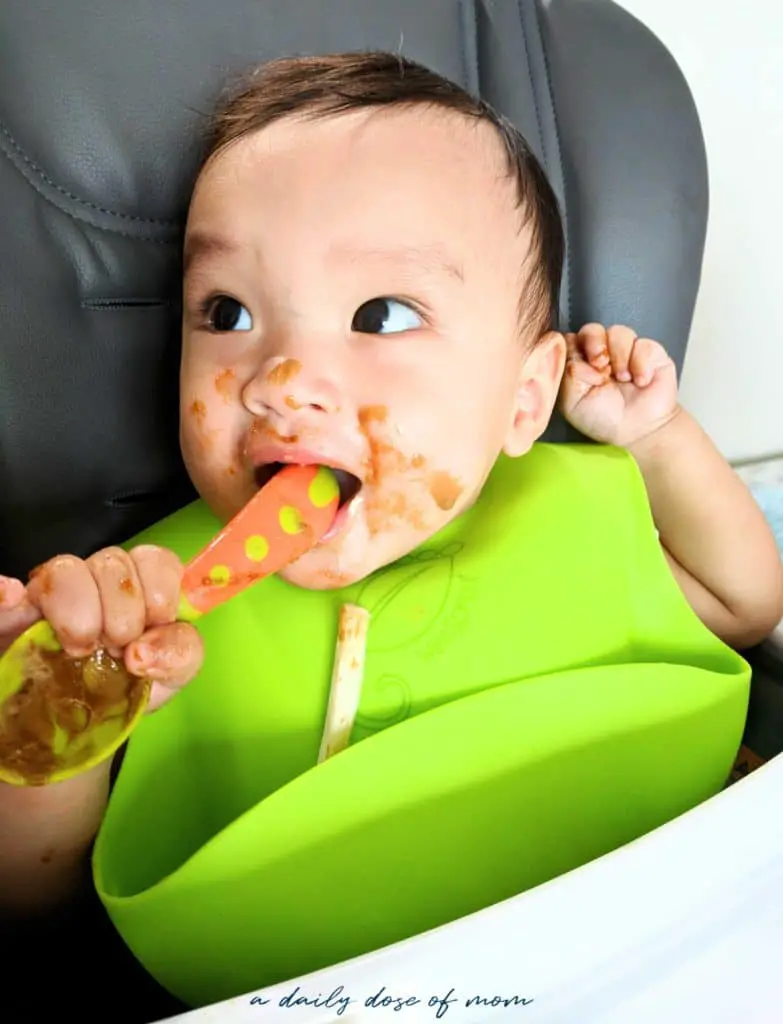
2.Start early
As soon as your baby starts eating solids, you can also introduce utensils. Now, don’t expect anything much right away, but this will help associate the utensil with food/feeding instead of a play thing. We started Remy with utensils when he was 7 months old, about 2 weeks after he started solids.
When you’re introducing different foods to your baby, you can hand them a spoon preloaded with something like yogurt. Their first instinct is to immediately put whatever they’re holding into their mouth. Yay! They’re using a spoon! Not quite, but it’s a start. ????
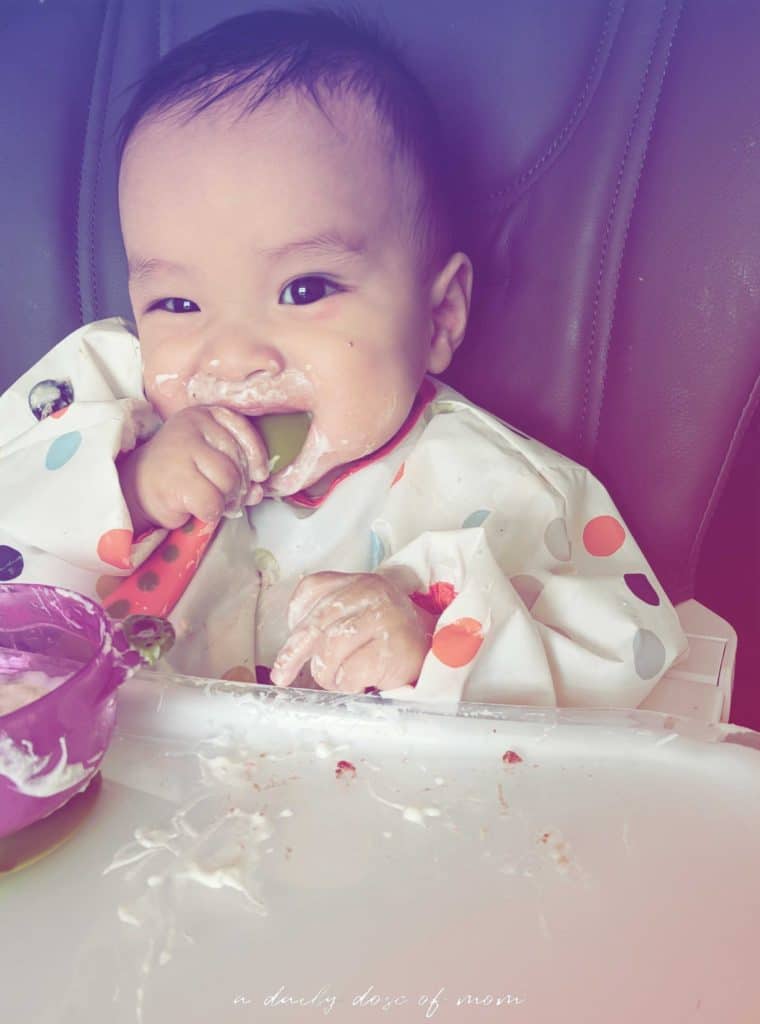
3.Start simple
Self-feeding with a utensil is such an exciting time, but don’t overwhelm your toddler with complicated food, such as peas or noodles. Of course you can still serve these, but don’t be disappointed if they use their hands for these instead of their utensil. For eating with utensils, it’s best to start with simple foods, such as applesauce or yogurt. You can also preload the spoon for them at the start (see Tip #5). We started with yogurt for Remy (because yogurt is life) and tried different brands until we found one with a thick consistency, such as Trader Joe’s.
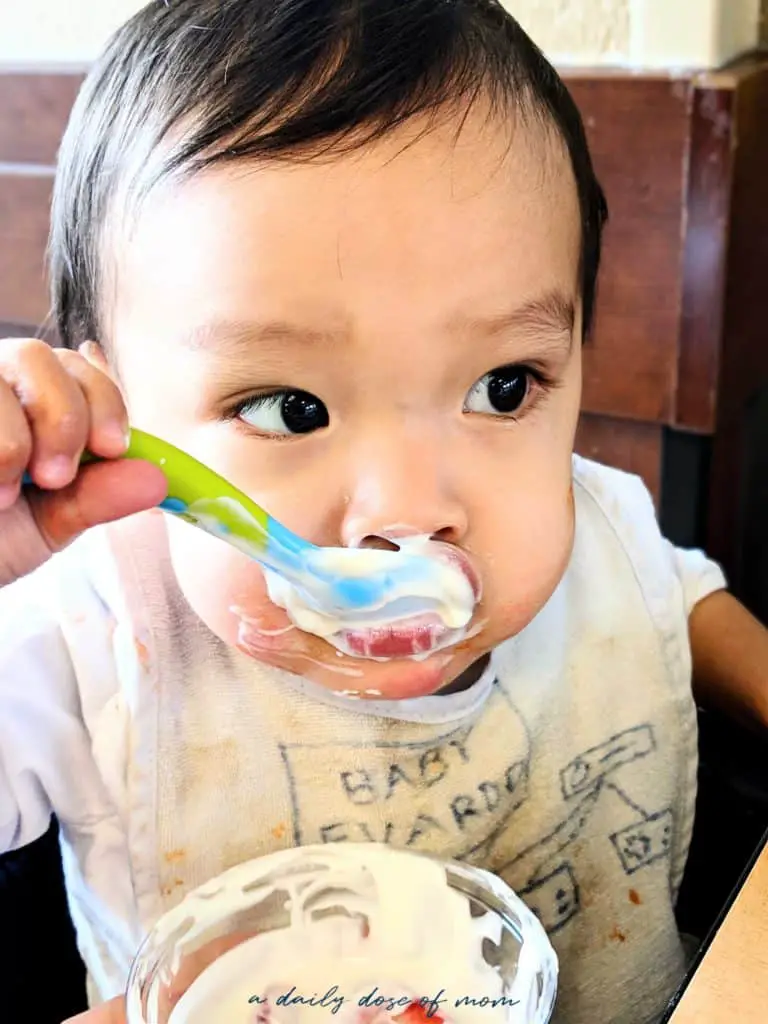
4.Use the right equipment
Using the right utensils will help alleviate any frustrations during this important milestone. Definitely avoid using adult-sized utensils as these are heavier and the metal is slippery to grasp. But how do you know which is the right utensil? You don’t! Every toddler will have their preferences, so try out a few different kinds and see which one they like and which one they don’t.
When shopping for baby utensils, look for ones with easy grip handles and small enough to fit in a toddler’s mouth. We tried four different kinds and Remy tends to like them all: Grabease, Nuby, Lullababy, and Munchkin. We can mix and match which utensil to use and Remy does fine. Some things that we have noticed is that the Grabease spoons are a little shallow, so it doesn’t do well with thinner liquids (such as soups) and the Munchkin Soft-Tip spoons are so tiny that Remy gets frustrated with how little food he gets with each scoop.
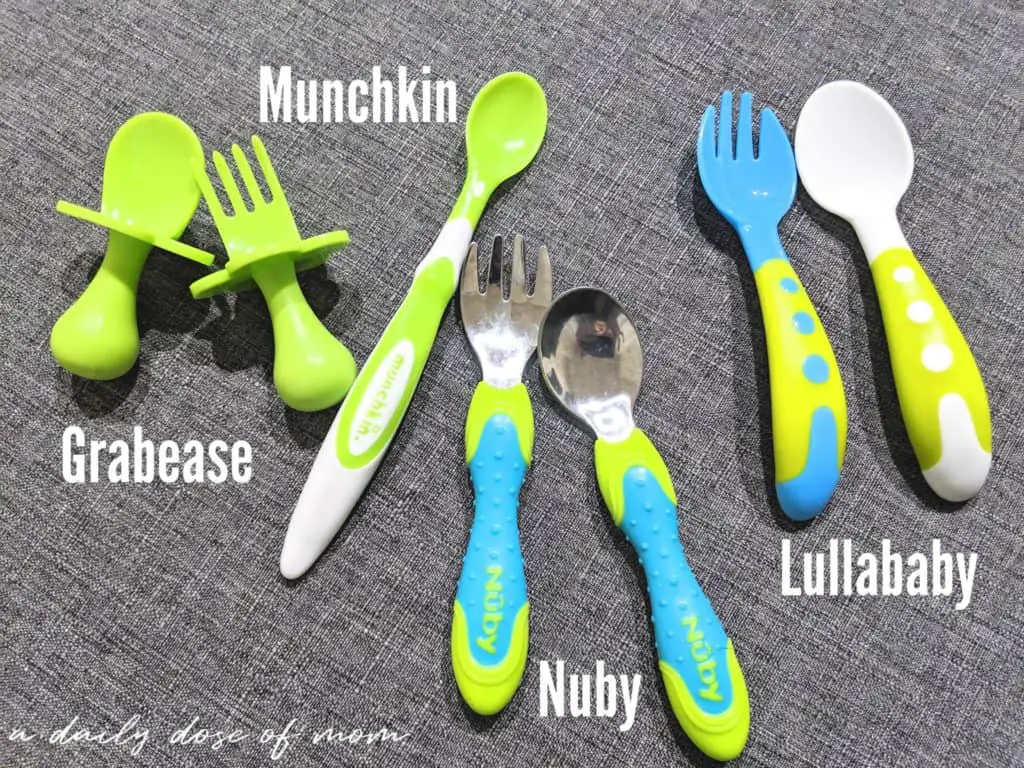
5.Preload spoons and forks
A preloaded spoon or fork allows your little one to practice the coordination of getting the food from table to mouth, but without the frustration of getting the food actually on the spoon with scooping or spearing.
Once your toddler has mastered the preloaded spoon from table to mouth, start placing the utensil in the food without preloading so that they make the connection that if they put their utensil back into the food, they’ll get more. Then comes the part of scooping or spearing, which will come as their fine motor skills develop.
When Remy was little, we used to offer a little bit of yogurt at each meal on a preloaded spoon. Remy loves yogurt, so this was a great motivator. Eventually, we offered him a small serving in a small bowl. The great thing about yogurt is that you don’t necessarily have to scoop it to get some on your spoon. Remy would just mix the spoon around the bowl (mimicking our motion as described below) and he would have more yogurt on his spoon just like that!
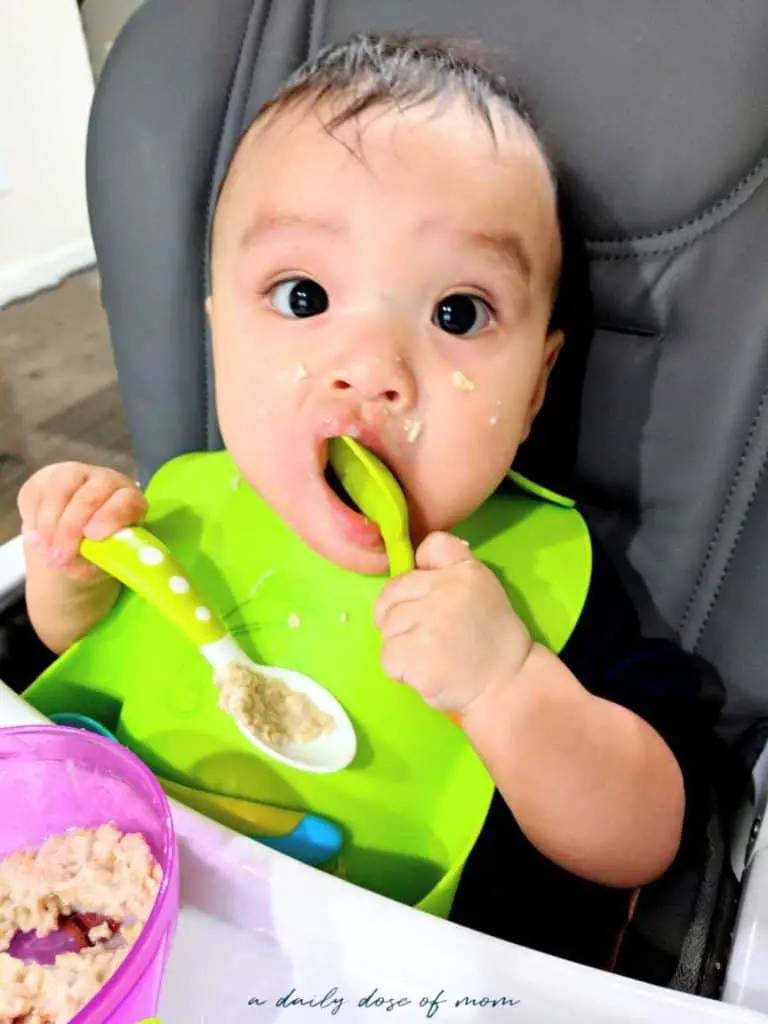
6.Be a good role model
As discussed in my BLW post, eating as a family is a very important aspect, but eating as a family is also important for self-feeding. Children tend to copy adults, so make it a point that the high chair is part of the same table where everyone else is eating. If you’re eating the same food that they’re eating with cutlery, they want to do the same. Exaggerate how to use utensils by making sweeping scoops of your food and opening your mouth wide when guiding the spoon there. The more they watch you use utensils, the more they want to try for themselves. And the more they practice, the better they get at it.

7.Be patient
Sometimes you’ll become frustrated when watching your toddler use their utensils. They may use it upside down or flip it on the journey from table to mouth so all the food falls into the high chair. It’s okay! They are learning. Food is a great motivator for most toddlers, so they will be very persistent in getting that food. Sometimes, they may even go back to their hands to eat and that’s okay too. Just keep offering the utensil and lead by example and they will get it eventually!
You will also have to be patient with the mess your little one will make. And they will make plenty of messes. But if you already did BLW, you’re used to the mess ;). Just know that with each mess, they are learning and it is temporary (hopefully, but I do know messy adults too LOL). They are exploring and maybe even learning how gravity works. Try to minimize the amount of clean up with a bib that has a pocket and a splat mat that goes under the high chair. Read about the other essentials you’ll need when your baby starts solids in this blog post.
.

And these are the top tips to get your toddler to use a utensil! Remember, that every toddler develops at their own pace. Do not worry too much if your toddler is developing a little differently than their friends who are the same age. If you have any concerns, be sure to discuss with your pediatrician. Thank you so much for stopping by and reading! What age did your toddler(s) start using a utensil?
Here are some articles you might like on feeding and baby-led weaning!




